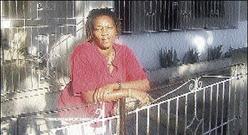Kennedy Reid, Contributor

Some time between April and June 1968[1] the first residents of Independence City stepped into the first modern scheme built in the Portmore area. The houses had concrete roofing as protection from hurricanes and termite, barber-green roads, hot and cold water, internal plumbing, central sewage, multiple rooms in a suburban setting. The houses cost between £2,600 and £3,550 and 20-year mortgages were available.
Plans for the development of Portmore were conceived and announced by 1964 and Independence City was the first housing development to get off the ground. This was due mainly to the fact that it was originally planed for Ferry in 1962 (hence the name) and had to be moved to the Portmore area instead.
In 1968, the Sir Neville Ashenheim outlined to the Senate that Independence City was designed to relieve housing congestion in the city of Kingston. The Causeway that granted access to Portmore and the dyke to contain the flooding of the Rio Cobre River were under construction at the time. They were conceived and constructed by Moses Matalon and his business partners. The new residents were some of the first to use the Causeway regularly.
The second scheme to be started was Edgewater. The air-conditioned 'villas' were designed specifically for Portmore and people started moving into them by 1971. After this, a building boom ensued and schemes were built in rapid succession. The Statistical Institute of Jamaica stated in 2001 that, "Perhaps the most outstanding growth witnessed [in Jamaica] over the past three decades has been the development of the Portmore community in the southern part of St Catherine."[2].
Over the next 40 years, just over 150,000 persons would follow the first residents into modern Portmore. This was made possible by entities such as the West Indies Home Contractors Limited, the National Housing Trust, the Ministry of Housing, the Urban Development Corporation and its subsidiaries, Gore (Gore Tuca, Gore Developments, etc.), Caribbean Housing Finance Corporation, Jamaica Mortgage Bank, The British Commonwealth Development Corporation, the United States Agency for International Development, and the Governments of Venezuela and Mexico. All were encouraged by successive Jamaican administrations, led by Messrs Shearer, Seaga, Manley and Patterson.
The influx of people from all over Jamaican (and particuartly from Kingston) transformed Portmore from rural villages and estates into the municipality of Portmore.
[1] Occupation date is deduced from two articles in the Gleaner. The first appeared on April 9, 1968. In this article, workers are putting the finishing touches to the first 19 houses at Independence City. The second article appeared on July 1, 1968. In it the JIS states that 'Some houses at Independence City occupied' . Consequently the people started entering between April and July.
[2] Statistical Institute of Jamaica Population Census 2001 Jamaica Preliminary Report Kingston. p.11
Bridgette Lindsay in front of the first house occupied in Independence City. She was two years old when she moved into the house next door. The house in the picture was the model house on Coral Gables Drive. Donald Andrade was the first resident.

